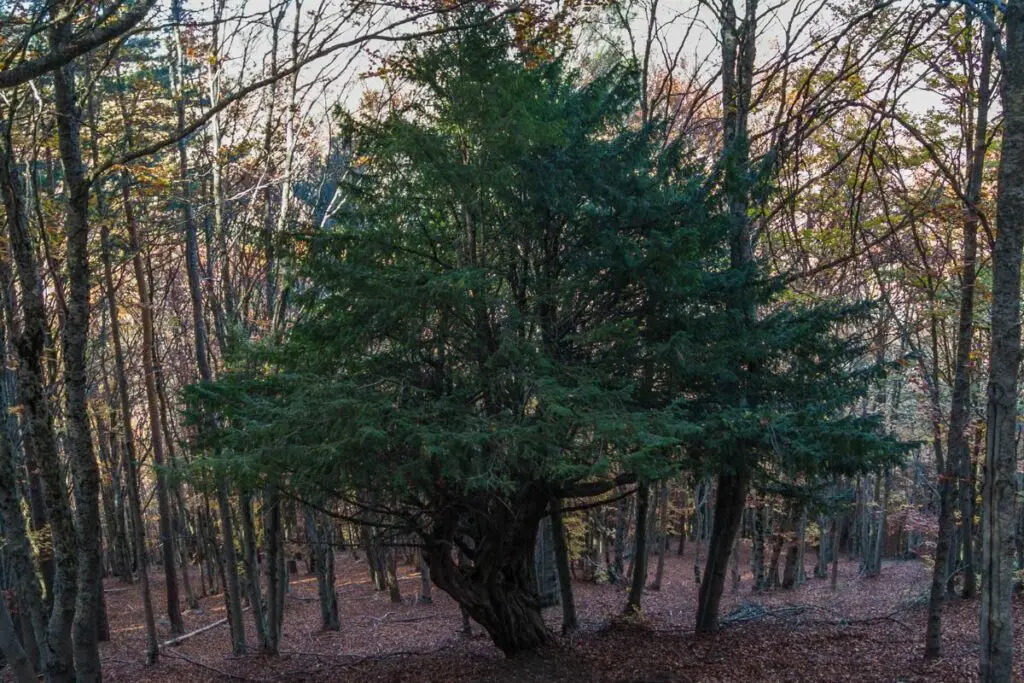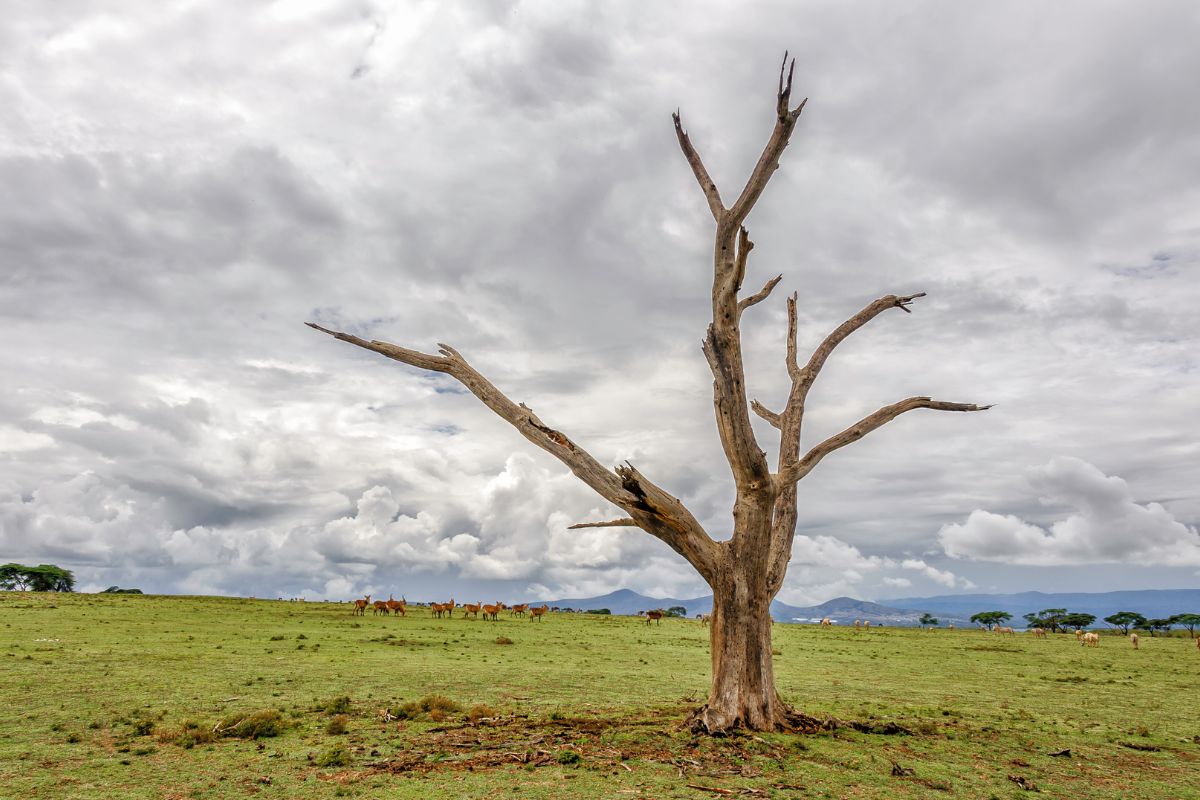Trees have long stood as powerful symbols in cultures around the world, embodying various meanings from life and prosperity to death and mourning.
As you explore the deeper significance of trees, you may find that certain species are particularly tied to the concept of death.
The somber symbolism can emerge from the tree’s physical characteristics, its place in myth and folklore, or the way it behaves throughout the seasons.
One tree closely associated with mortality is the cypress tree, revered since ancient times for its tall, upright form that seems to point towards the heavens.
Due to its evergreen nature, it represents eternal life and is commonly found in graveyards, symbolizing a guard over the departed.
Another species, the elder tree, carries a twofold meaning; it signifies both the end of life and regeneration, as seen in its ability to revive and grow even under harsh conditions.
Cultural Significance
In exploring the cultural significance of trees symbolizing death, you’ll discover that specific species carry profound meanings within various traditions.
These trees often serve as potent symbols in rituals, art, and storytelling.
Mythology And Folklore
In many cultures, certain trees are deeply intertwined with the concept of death.
The Yew tree, for instance, is commonly associated with death due to its longevity and its evergreen nature, which contrasts starkly with the concept of human mortality.
Mythologies around the world have designated such trees as sacred, often planting them in graveyards or using them in death-related ceremonies.
- Europe: Yew trees are found in many old churchyards, symbolizing everlasting life.
- Celtic: The Celts considered the Yew to be a connection between this world and the next.
Literature And Symbolism
In literature, trees that symbolize death are not only background elements but powerful symbols that reflect the themes of mortality, loss, and remembrance.
Writers have drawn upon the symbolism of trees like the Weeping Willow to evoke feelings of sorrow and to represent mourning.
- Shakespeare: The willow is a prominent symbol of grief, used in plays like “Hamlet.”
- Modern works: Authors continue to use tree symbolism to add depth to their narratives on death.
Types of Trees Associated with Death
Different trees carry various symbolic meanings including those associated with death. Here are some specific trees that have been historically linked to the end of life.
Yew Tree
The Yew tree is rich in symbolism, often representing death and transformation.
This association is partly due to its toxic berries and its presence in ancient burial grounds. The yew, being long-lived, also signifies the cycle of life moving toward an inevitable end.

Cypress Tree
Historically, the Cypress tree is known to signify death and mourning.
Its use in graveyards and its evergreen nature, symbolizing eternity, make it a strong emblem for both protection in the afterlife and the sorrow of those left behind.
Willow Tree
Willow trees, with their drooping branches, have often been linked with sadness and therefore death.
This tree’s presence near bodies of water, where it appears to weep into the stream, enhances its mournful symbolism during times of loss.
Interpretations and Beliefs
Trees have held powerful symbolic meanings across various cultures and traditions. Your understanding of their significance can deepen when exploring how they relate to the concepts of death and the afterlife.
Spirituality and Religion
In many cultures, trees are seen as vital connectors between the physical world and the spiritual realm.
For instance, the Yew tree carries a heavy association with death and the eternal, often found in European graveyards.
Its longevity and presence in sacred spaces imply a bridge to the ancestors and the otherworld.
In Judaism, the Tree of Life is profoundly linked to wisdom and knowledge, representing the continuous cycle of life and death.
Mourning and Memorials
Elder trees, according to mythology, signify an end and are frequently associated with mourning.
Their ability to regenerate even in harsh conditions can symbolize hope and rebirth after loss.
Trees like these are often central to spaces of remembrance, not only for their symbolism but also for their physical presence that offers a place to reflect and grieve.
Artistic Representations
In artistic traditions, certain trees have come to symbolize death, each portrayal offering a unique narrative on the cycle of life and mortality.
Visual Arts
In the realm of visual arts, the cypress tree stands as a poignant emblem of death and the everlasting.
Often found in graveyards, the cypress is a common subject in paintings where it is used to evoke themes of mourning and eternal life.
This evergreen has been documented as a nature’s memento mori, simultaneously signifying death and the potential for rebirth.
Your encounter with this symbol in art may move you to contemplate life’s transient beauty.
Performing Arts
In performing arts, the representation of death through trees is more dynamic and may involve dance, theater, or music.
A performance could include a backdrop featuring leafless trees to convey a scene of desolation or the end of a season, encapsulating both the literal and metaphorical withering of life.
You might witness a ballet where a solitary tree on stage becomes a powerful actor representing life’s fragility.
The tree’s inclusion in a story often guides your emotional journey through the narrative of loss and remembrance.
Conservation and Environmental Perspectives
When you consider trees that symbolize death, you might instantly think of the cypress tree, known for its links to burial practices and eternal life.
However, from an environmental standpoint, there are broader implications.
The presence of certain trees, including large, old ones and deadwood, is crucial for ecosystem health.
Benefits for Biodiversity:
- Provides habitat for various species
- Services as a food source for decomposers
- Aids in nutrient recycling within the forest
The inclusion of these trees in conservation efforts is vital to maintain biodiversity.
Historically, the removal of old trees and deadwood has been seen as beneficial for forest cleanliness and economy, ignoring their ecological value.
Recognizing the “life after tree death” is essential to forest conservation, as it helps stop deforestation and forest degradation.
Conservation Practices:
- Emphasizing the protection of old-growth trees
- Leaving deadwood in place for habitat complexity
- Regular monitoring for ecological balance
By understanding the role of trees that symbolize death in natural cycles, you play a part in supporting forest ecosystems.
Challenge the perception that these trees are mere waste; they represent life for countless species and contribute to the forest’s integrity.
Your advocacy for conservation practices that respect the full life cycle of trees can make a substantial difference.
